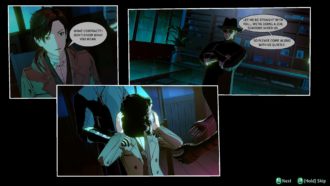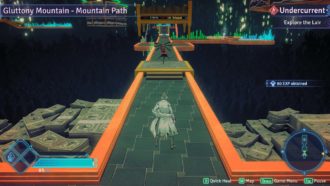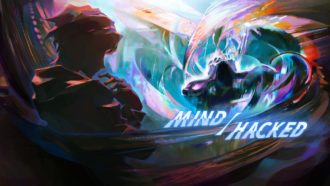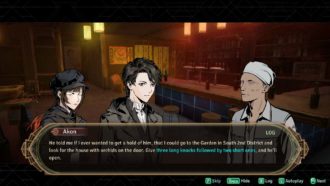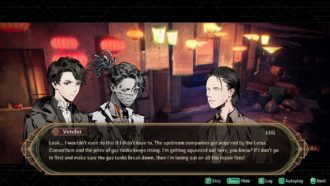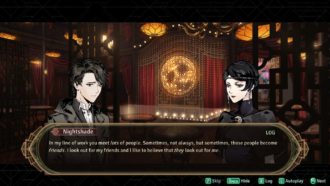Platforms:
Xbox One, PS4, PC, Nintendo Switch, PS5, Xbox Series X|S
Released:
March 10, 2023
Publisher:
Prime Matter
Developer:
Arrowiz
Mato Anomalies does its best to critique a post-apocalyptic world with East Asian cultural themes. While the gameplay has solid foundations, it is dragged down by a confusing story and a need to grind. It’s hard to invest in the characters as there is often little growth, and the narrative focuses on more abstract concepts.
The foundations of a traditional RPG are there, and everything works smoothly at first with a great visual world to encounter. But as the game goes on, it becomes a struggle to stay interested and remain. Each chapter also requires you to grind for better equipment to properly face enemies, extending the game’s length. The flaws of Mato Anomalies overshadow the positives, and it’s hard to recommend this game unless you have nothing better to do.
Mato Anomalies puts you in the shoes of Doe, a private detective in the city of Telosma. He gets a job investigating a shipment of HANDOUT, a mysterious substance that is linked to criminal activity. While investigating a shipment at the harbour, Doe is sucked into another dimension (called a Lair) and is attacked by a creature known as a Bane Tide. Doe is rescued by a shaman named Gram, who becomes Doe’s only way to investigate the mystery behind HANDOUT.
The story starts off as a crime mystery, but it soon incorporates other narratives as well. Corruption, military campaigns, the meaning of life, the futility of change, and dimensional travel are just a few of the themes woven into the story. It is an ambitious story, but unfortunately, the game doesn’t understand the concept of “less is more”. By mixing multiple themes and narratives into the story, you are confused because you don’t understand what is going on.

Parts of the story are broken up with monologues that try to reinforce the many themes, but it doesn’t help. Instead, the story is muddled even further, and it becomes less clear. By the time you finish the game, it’s not hard to wonder what the entire point of the story was. It doesn’t help that the characters, who are supposed to work with the narrative, are mostly one-dimensional.
Everyone, from the main cast to the villains, is hard to understand or relate to. While Doe and Gram recruit more allies for future adventures, the recruitment comes out of the blue. Allies have a single motivation and don’t show much character growth outside of it. Villains are deliberately vague about their motivations, which is supposed to make them look mysterious and cunning. Instead, it makes them look ridiculous because their objectives never make sense.
“The story tries to do too much at once, and it ends up being a mess that’s hard to understand.”
The story tries to do too much at once, and it ends up being a mess that’s hard to understand. It’s hard to hold your interest when the story tries to introduce yet another theme, muddying the narrative even further. Allies and villains alike don’t catch your interest because few aspects of their character are properly investigated. You never know where the story is going, but not because you’re hooked. It’s because the story rapidly changes themes, and it’s enough to make you abandon the game because it never gets clearer.
This is a shame, because the amount of work that went into building the post-apocalyptic city of Telosma is impressive. It draws a lot of inspiration from urban Chinese cities, which is reflected everywhere and looks wonderful. The problems that everyday citizens experience, along with the seemingly untouchable status of the rich and powerful, is often felt through side quests. Even the voice acting is done well, with Chinese, English, and Japanese voices never feeling out of place. Unfortunately, the story makes Telosma a pain to explore instead of a city you’re dying to investigate.
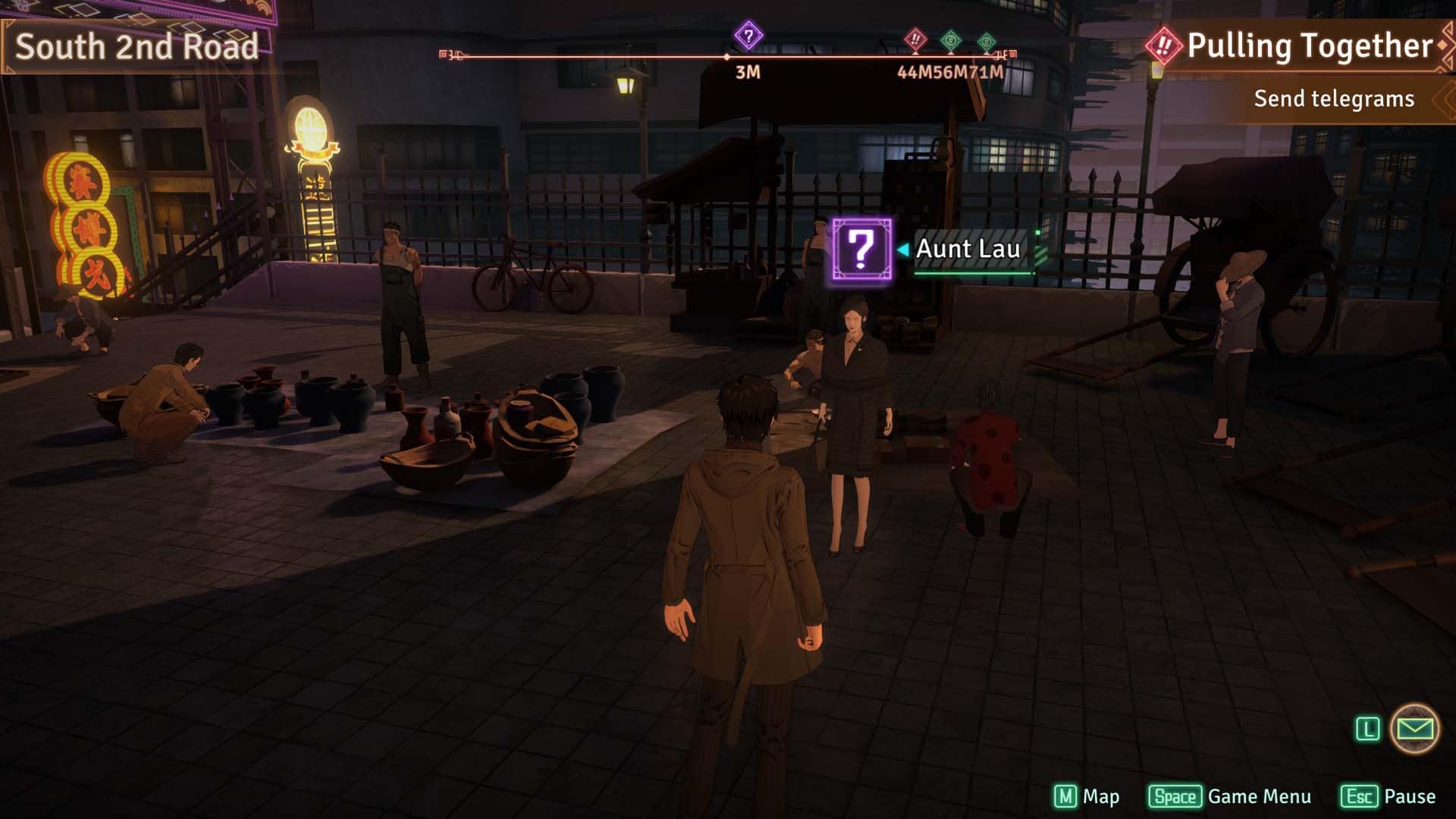
Gameplay consists of three different aspects, exploring Telosma and Lairs, combat, and Mind Hacking. Doe will explore Telosma and perform Mind Hacking, while Gram explores Lairs and deals with combat. It’s a nice split that makes investigating feel like a team effort, rather than one man carrying the operation on his back. Exploring Telosma is similar to other RPGs, where you buy items, collect side quests, and talk with other NPCs. Mind Hacking occurs whenever Doe requires information that someone else is withholding, and it takes the form of a card game.
Mind Hacking is a mini-game that requires strategy, since it’s rarely enough to brute force your way through. You must pay attention to the cards in your hand, combinations that can be made, and what obstacles your opponent has. If you struggle, you unlock different decks that allow you to pursue different strategies and choose the playstyle you like.
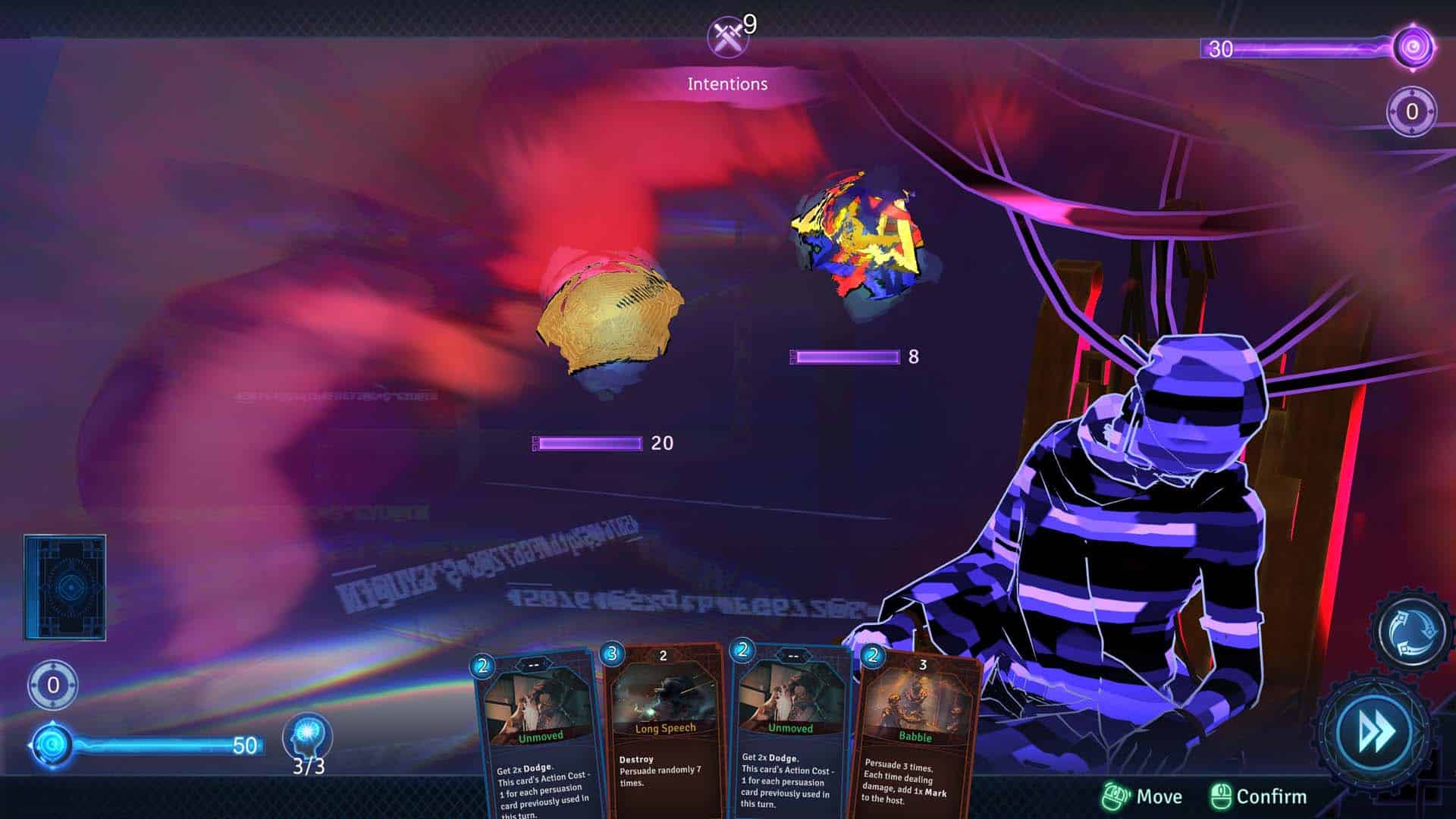
Unfortunately, there’s no option to practice Mind Hacking, with almost no chance to practice unless you fail. Learning how opponents work will also take time, since the descriptions aren’t always clear. This can turn Mind Hacking into a frustrating activity since you often can’t complete stories or side quests until it is done.
This frustration continues with combat, despite it being a typical turn-based system similar to other RPGs. Everyone shares a health bar, which prevents characters from being KOed. Characters have their own moveset and attack attributes, which target different enemy weaknesses. You can get equipment to boost character stats, gain effects, and even new moves. There are also Gears you can equip to boost your team’s overall performance. There’s some good strategy involved as you must apply buffs/debuffs, target weaknesses, and make sure everyone is healthy.
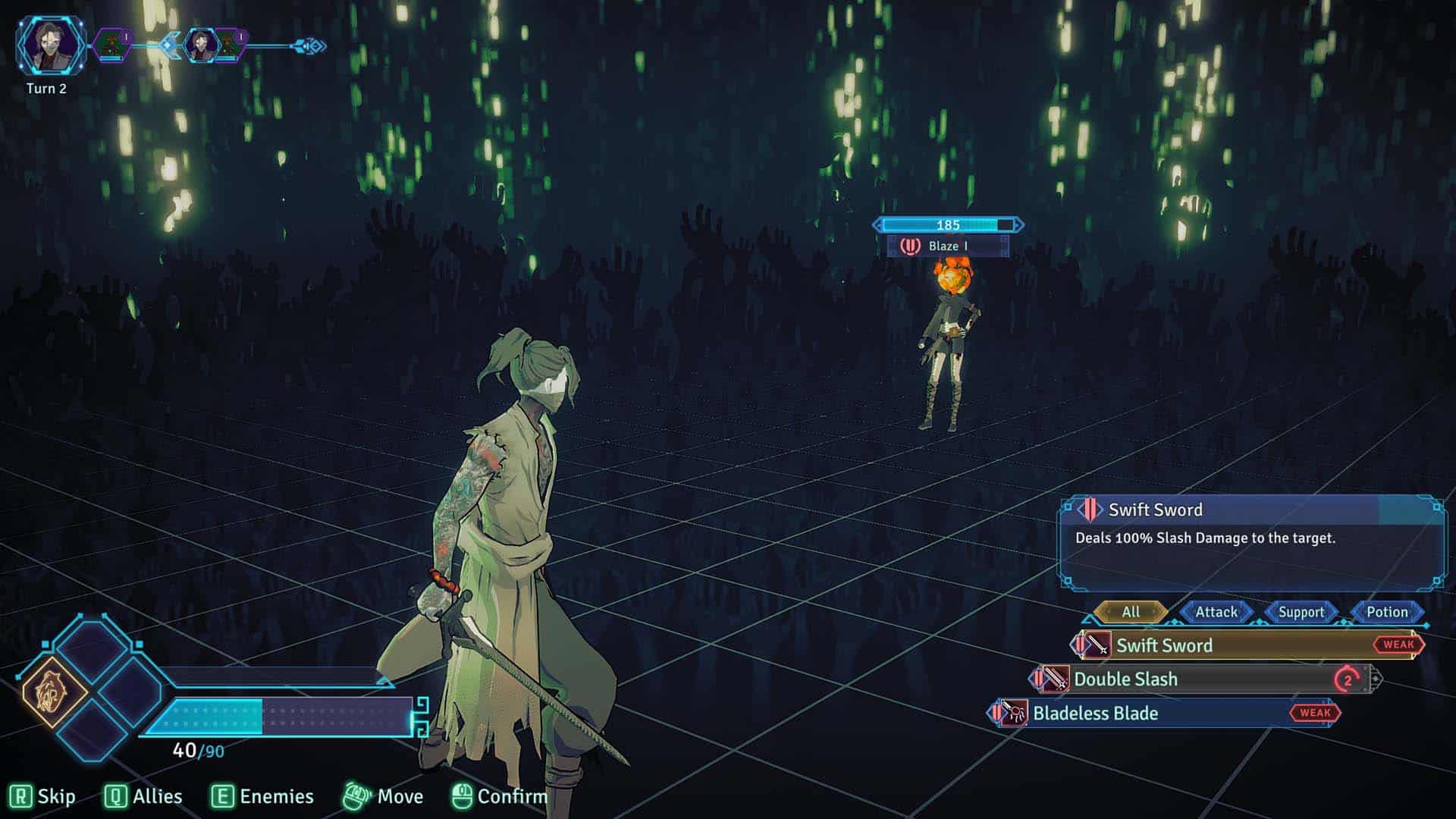
The problem with combat isn’t how it works, but how dependent it is on equipment. Enemies get progressively more powerful with each chapter, requiring better weapons and Gears each time. While you can buy equipment at a shop, they often have a high cost which forces you to grind for the money. Exploring Lairs for treasure can get you more powerful weapons and Gears, but it is random. Either way, you are forced to grind random dungeons to stand a chance against opponents.
On Normal and Hard difficulties, this can require multiple trips through dungeons just to keep up. It’s a significant time investment, which clashes with your already-draining interest in keeping up with the story. With nine chapters of combat, you must keep getting better equipment or quickly fall behind. Whether you buy equipment or get them through treasures, you can’t get around the grinding. The final boss can be tough enough that you must grind post-game content just to win. It’s a process that takes the fun out of a solid combat system and tempts you to abandon the game.
5
Average
Positive:
- Solid turn-based combat system
- Good English, Chinese, and Japanese voice acting
- The visual aesthetics of Telosma are great to take in
Negative:
- An overly complicated story that doesn't resolve itself properly
- Combat that requires you to grind just to keep up
- Flat characters and villains are hard to relate to
- Can't practice Mind Hacking without repeated failures
Mato Anomalies has solid RPG fundamentals that can create an enjoyable experience in the beginning. Combat is fun to engage with, the world looks interesting, and the story has an intense start. Unfortunately, the game drags itself down with a narrative that never figures out what it wants to be, throwing in multiple themes which make little sense collectively. Combat requires increasingly large amounts of time investment, which can make you sick of the grind. It’s hard to find yourself continuing to the end, and the game doesn’t make much sense even if you do finish it. If you are looking for an RPG that requires grinding and you don’t mind the repetition, you might enjoy Mato Anomalies. For those looking for a strong narrative that leaves you impressed, look elsewhere.
